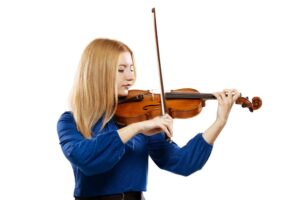 The violin is a great instrument for children to learn. Even if your child has had no introduction to any instruments prior to picking up a violin, it’s a worthwhile endeavor. Violin lessons in Seattle are ultra-convenient with Lessons in Your Home, and you can get your child the perfect child-sized violin to start practicing with. It’s true, the violin is a versatile and exciting instrument to learn, and your violin lessons in Seattle can help you expose your child to the vibrant music scene in Seattle.
The violin is a great instrument for children to learn. Even if your child has had no introduction to any instruments prior to picking up a violin, it’s a worthwhile endeavor. Violin lessons in Seattle are ultra-convenient with Lessons in Your Home, and you can get your child the perfect child-sized violin to start practicing with. It’s true, the violin is a versatile and exciting instrument to learn, and your violin lessons in Seattle can help you expose your child to the vibrant music scene in Seattle.
But, just like any new instrument, learning the violin comes with some curves. For young students especially, it can be difficult to master how to hold your bow. This is natural for young violinists, and some students can just be slow to really understand the technique. For others, they have a hard time committing to practicing, which can slow down their mastery of the instrument. Either way, every instructor giving violin lessons in Seattle knows that one way to get kids to learn proper bow technique is through engaging games.
To keep kids engaged and motivated, we mix lessons up from time to time and incorporate several games that help your child learn how to hold and use their bow correctly. Most of our games require little to no preparation, while a few require some household items. Either way, these are games that can be replicated at home during practice to reinforce proper technique.
Bunny Ears
This game helps reinforce proper finger and hand placement for holding a bow. In this game, there are no actual bows involved. You’re simply trying to reinforce proper technique through a silly game.
For bunny ears, students start off by making a “C” shape with their hand. Then, children touch their middle finger and ring finger to their thumb. This motion will form the face and chin of the bunny. Children keep their index and pinky fingers up, but bent slightly, to look like floppy bunny ears. The whole thing put together resembles bunny ears but is a great way to practice how to properly hold your bow.
Pass the Cup
This game is best used when there are two or more violinists present, but some improvisations can be made at home to make it a fun family game. In class settings, Seattle violin teachers can ask students to take a small plastic cup and put it on the tips of their upright bows. The student holding the bow will pass it to the next person in line, but each person must be exhibiting proper bow positioning and have their bow upright and pointed towards the ceiling before they can receive the cup.
Catch the Mistake
This game begins with us teachers demonstrating proper bow holding techniques to their students. Then, we’ll ask students to close their eyes while we rearrange our positioning to demonstrate an improper bow holding technique. For instance, we might try to connect all of our fingers to our thumb to almost make a fist around the bow. When we’re ready, we’ll ask students to open their eyes and call out the technique mistake.
There are far more mini-games or exercises you can do to strengthen your technique and keep your young musicians engaged and learning.
- Open and shut – this motion requires students to hold their bow in their hand and keep their arm bent at the elbow at a 90-degree angle. Without moving their shoulder, students practice only moving their elbow open and shut. This is incredibly helpful in learning to keep the bow straight when playing.
- Pinky taps – this technique requires students to assume proper bow holding technique and to extend their arm straight in front of them, so their bow is parallel to their chest. Students then, without letting the bow move or fall, tap their pinky on the end of the bow.
As you can see, there are so many ways to transform violin lessons in Seattle from boring to fun by incorporating fun little games that break up monotony and keep kids engaged. Not only are these great for formal instructional settings, but these games can be practiced at home, too.
Contact us today to find out more about our teachers! They can either come to your home to teach or can also provide online music lessons. Our virtual music lessons are taught by local music teachers who plan their lessons to suit your child.